Oh Christ. I’m really learning to hate photographers and art directors.
This feature was originally published in MOTOR’s September 2001 issue
Here I am, punting a 260kW Nissan 200SX hotrod, with a similarly tweaked Air Power Systems RT-Spec WRX and a race-spec Integra Type R in tow, and we’re weaving in and out of peak-hour Melbourne traffic because Trev the art director, who dresses like Ali G, wants an ‘urban landscape’ as a backdrop.
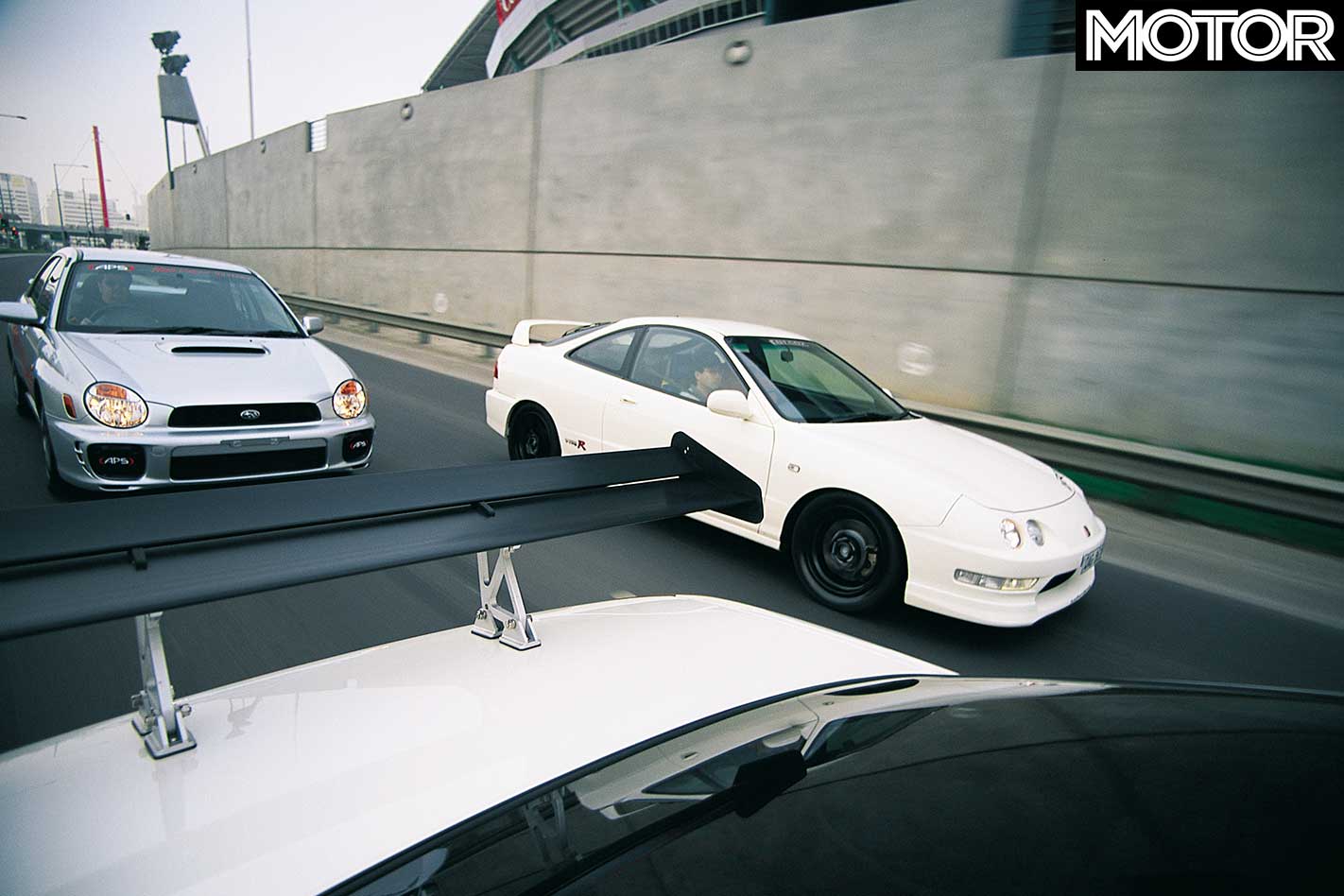
Not that a big rash of blue lights would surprise me right now; not one of these cars is what you’d call subtle to look at, and the Subaru is the only one that would get within Billy-Oh of passing a drive-by noise test (in fact, the Sube is fully ADR-legal).
And another thing (you listening Trev?): what the hell would you be thinking trying to use tools like these in a city environment? If ever a bunch of rockets deserved a squiggly ribbon of hotmix to play on, this is that bunch. Urban environment my big, hairy white arse.
Meanwhile, I’m continually struck by the fact that if some is good, more must be better. Simplistic maybe, but stay with me. See, all these three are performance cars in stock trim and in their own right. There’s room in my shed for any of them, but some people are just never satisfied.
What this bunch proves is that with a few careful tweaks (and a fistful of bucks) you can suddenly wind up with absolute balltearers capable of bestowing gelding status on some alleged thoroughbreds.
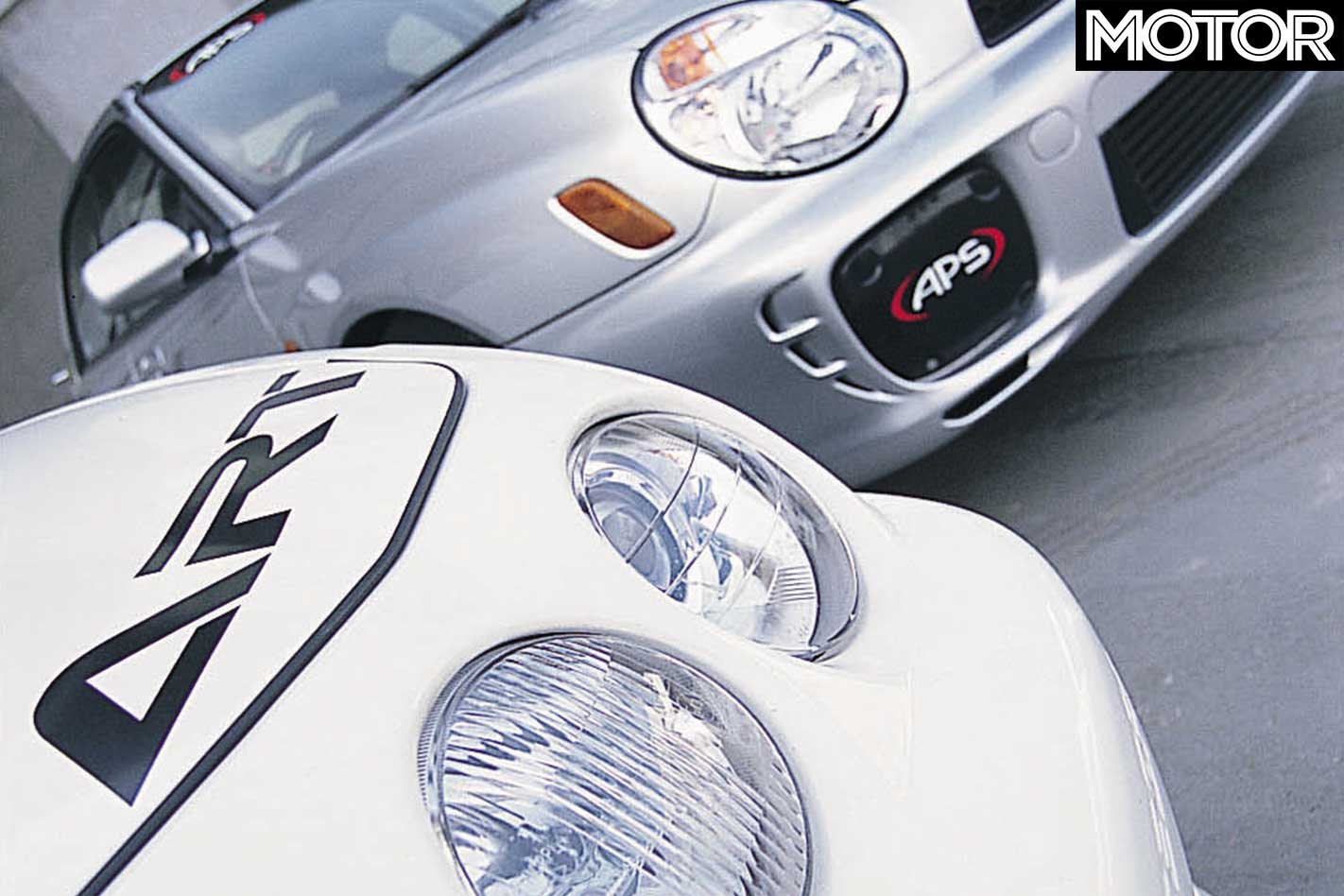
Don’t believe me? Not one of these cars would have any trouble lapping a racetrack in a respectable time, not one of them is anything less than totally absorbing to drive and not one of them needs more than 13.9 seconds to cover a standing quarter. That’s right, not even the Integra with its non-turbo, 1.8-litre engine.
Speaking of which… the Integra is the work of Technik Tuning and is more a function of careful additions rather than wholesale changes Careful stuff like a tuned-length four-into-one exhaust that’s also lagged to keep the heat – and energy – in the pipes and not the engine bay. But ditch the non-essentials like the fancy dress-up bits and you’re left with a standard VTEC mill that hasn’t been touched from the rocker cover down.
So where’s the extra 25kW at the wheels come from? Mainly the exhaust, a reprogrammed chip, new inlet manifold incorporating a cold-air system and fine tuning like slotted cam-drive sprockets to allow the cams to be phased just so.
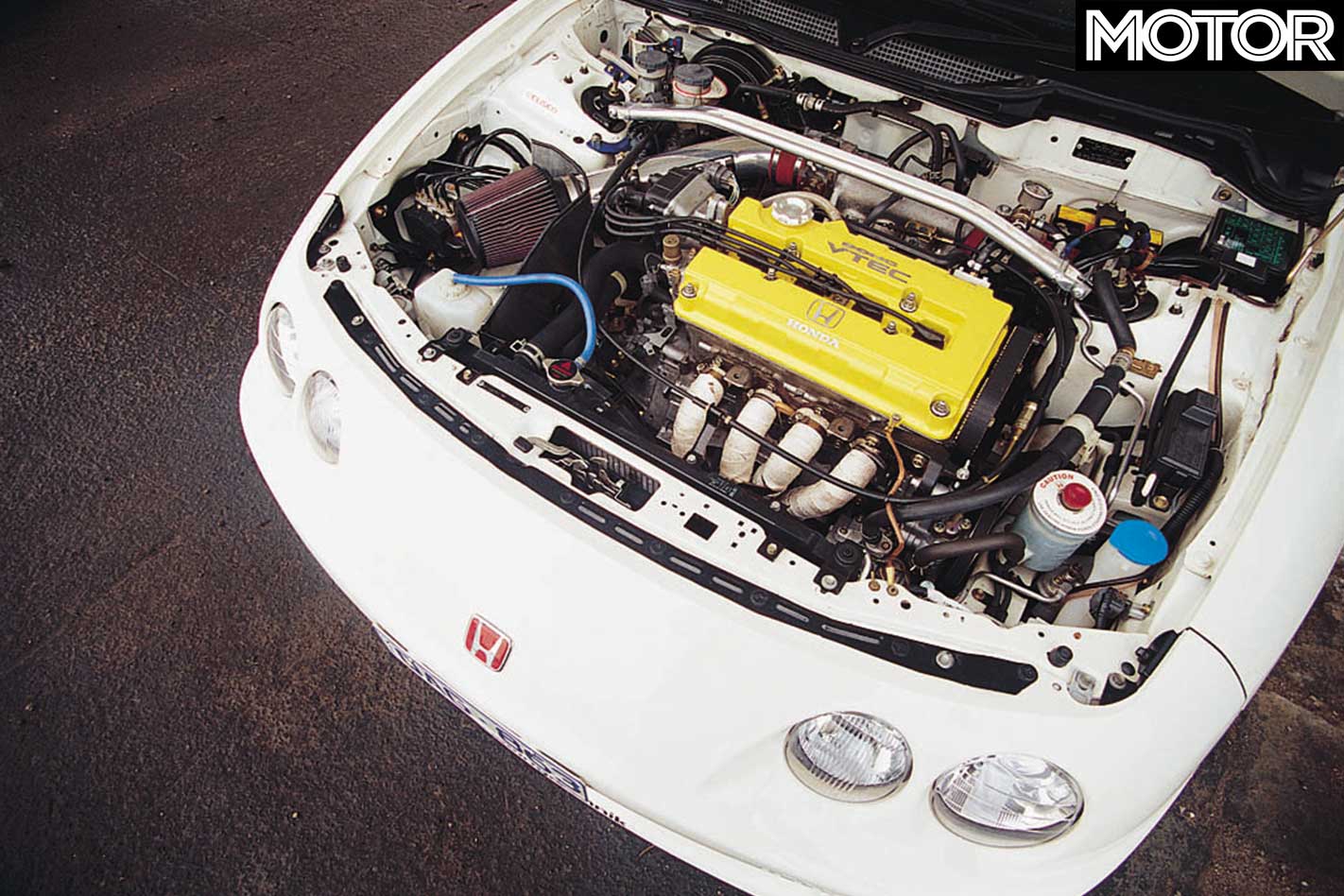
If anything, getting the cam timing spot on has actually reduced the severity of the kick-in-the-date when the hydraulics lever in the big camshaft profile at 5600rpm. Where the stocker gets all feisty at that point, the modified car certainly gets a leg up, but not to the same extent. Since it already has more top end, this must surely be down to the extra-fat bottom-end surge that makes this Integra something really special.
But the noise! Lord, the noise. The massive gob on the thing hints at lots of decibels and you aren’t going to go home disappointed. Where some loud cars can be punted along fairly unobtrusively by keeping the revs low, the Type R offers no such facility.
At low revs (under 3500rpm) it rumbles and grumbles and generally bitches, sending all sorts of lurid vibrations and 100dB buzzes through the cabin and into your earholes. Above that, it smooths out a bit, but still gets louder and when you trip the switch at 5600rpm, the Integra can be heard in the next parish.
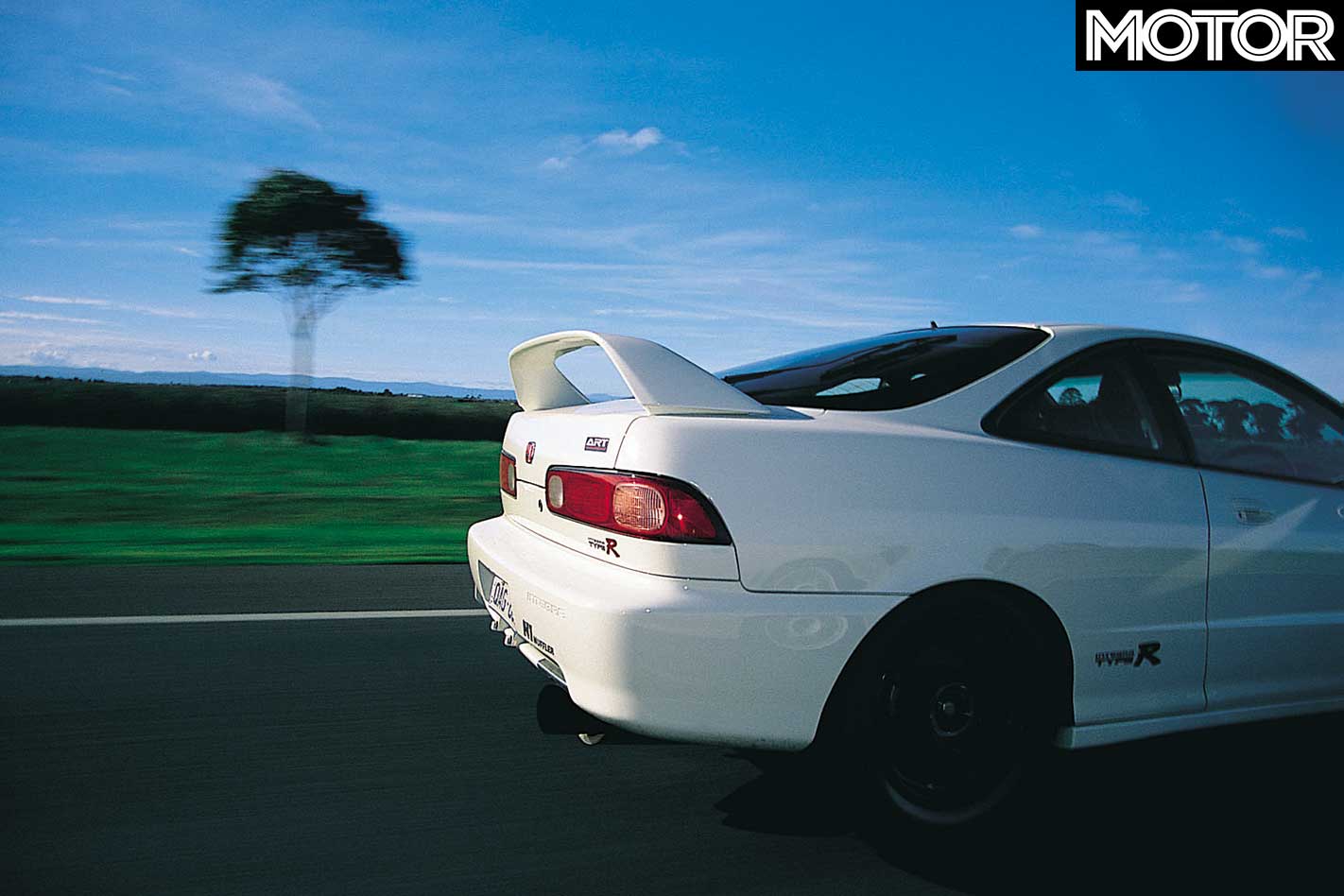
Switching on the stereo doesn’t help, winding the windows up does nought either. And even if you could live with it, it’s a fair bet the rozzers couldn’t. Your shift-working neighbours may just sugar-coat you and peg you out on an ant’s nest, too.
The Evolution R-fiddled 200SX is also ridiculously noisy, but not all the time. Keep it off the boost and t’s a gruff, blubbering bugger that gives the occasional pop on the overrun and allegedly you’ve removed the muffler’s baffle to liberate another 20kW or so – spits flames between gears.
Boost it up, meanwhile, and the noise changes to something like a tin shed full of A.D.D. kiddies banging saucepans through a 1000-Watt PA.

That’d be okay if it wasn’t almost impossible to keep the Nissan off boost. Sticking with a stock turbo means it spools up as swiftly as the stock 200SX but the big air-intake and $2600 worth of aftermarket intercooler mean the boost whacks the pistons back down their bores harder than a stocker can ever manage. A monster-bore exhaust completes the package and careful tuning on the engine management has netted an equally monstrous 198kW at the rear wheels. Eek.
While the power is certainly boosted over stock, so is the level of vibration and frizz that enters the cabin. And, like the Honda, it’s all down to the exhaust which has so many resonant periods, there’s a new and interesting vibe every couple of hundred rpms.
And I can’t believe that it’s pure coincidence that the smoothest of the lot, the APS-tuned WRX is also the quietest and most comprehensively muffled. While the others are very fast noise machines, the Rex is also extremely quick, but doesn’t have quite the BLARRRGGHH factor built in.
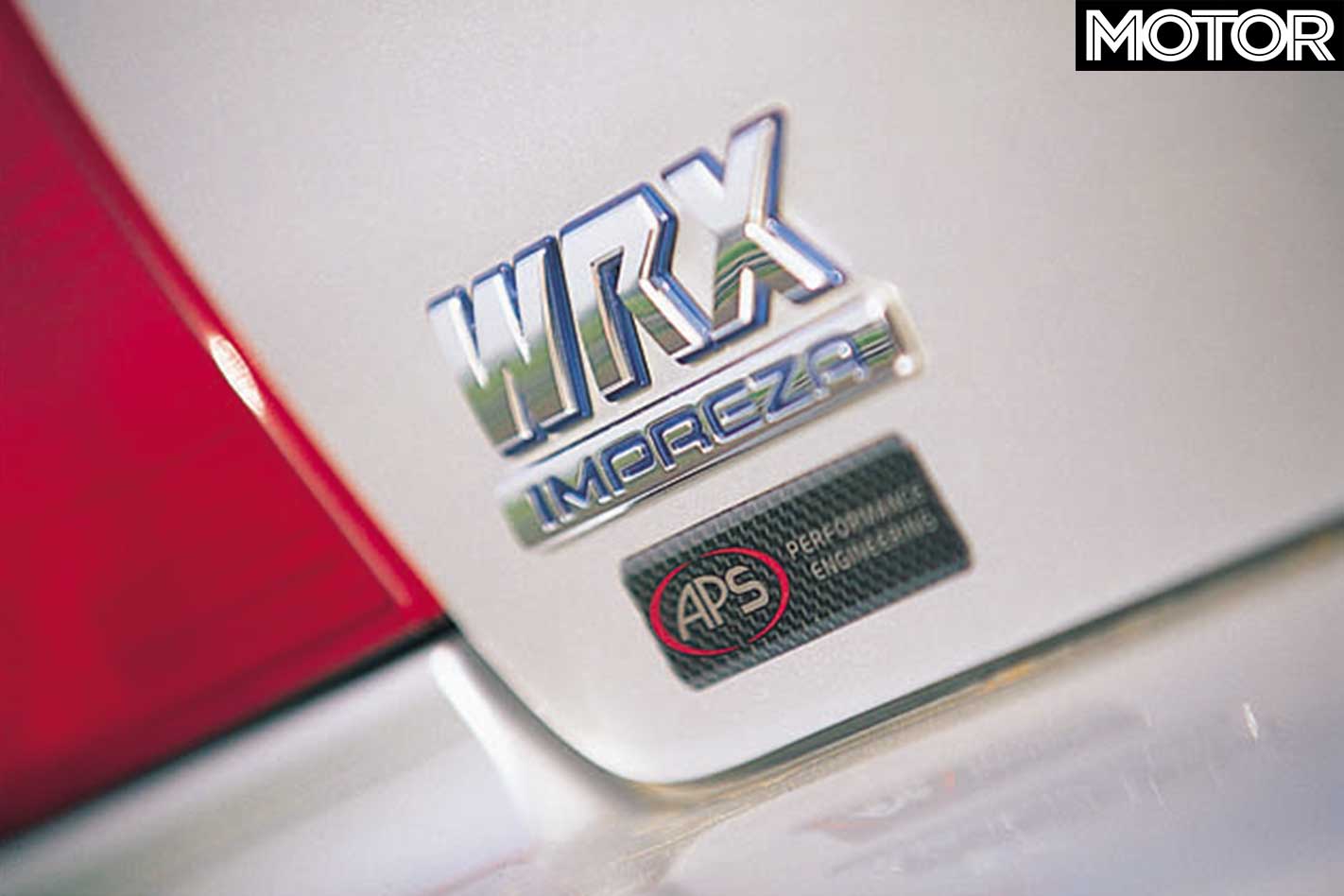
Oh, it’s still louder than stock and can still sound a bit drony on the freeway, but it’s a way better quality of noise because you can actually immerse yourself in it, rather than just shy away from it on long-term medical grounds.
And you’re not constantly looking over your shoulder. Don’t get me wrong, I crave an exhaust note, but the WRX’s combination of volume and sophistication is way more soothing than the war-going-on-nearby cacophony of the others.
The important thing to note is that sounding classier doesn’t detract from performance. No Siree. In fact, the Rex was the quickest of this lot, storming across the quarter mile in a stunning 12.8 seconds The Nissan was next at 13.4 seconds but, curiously felt faster than the Sube on the road.
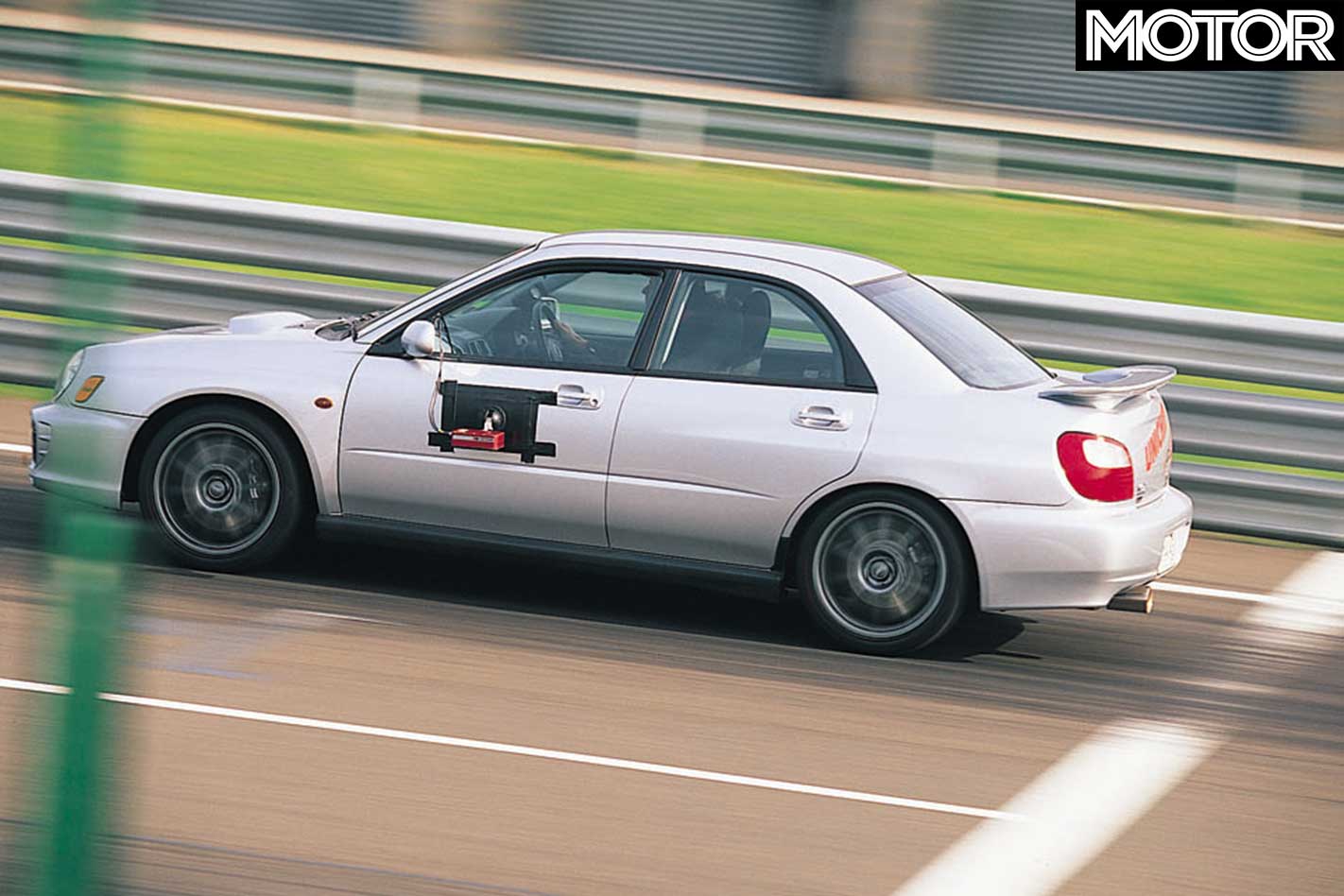
It probably is, too and you can put that down to the way the Rex launches hard and fast with about 5500rpm dialled up and a side-stepped clutch Sounds cruel, but in reality it’s probably kinder than slipping the clutch. You can jump off the clutch with confidence because this Rex makes 240kW and won’t, like a stocker, bog down and die in the bum.
APS fits a front-mounted intercooler, along with a cast alloy air intake for maximum deep breathing he turbo unit is also uprated to a ball-bearing model capable of 1.3 bar, while a Unichip and pop-off valve complete the RT-Spec package.
Ah yes, the pop-off valve. While the Rex might be the least rowdy through the pipe, that blow-off valve is a major contributor to the noise that is available. Back off (or even hold a steady part-throttle) and the valve is foofing and faffing like a deranged jogger.
The 200SX also had a valve venting to the atmosphere, but it only chimed in under heavy load and was never as loud anyway.
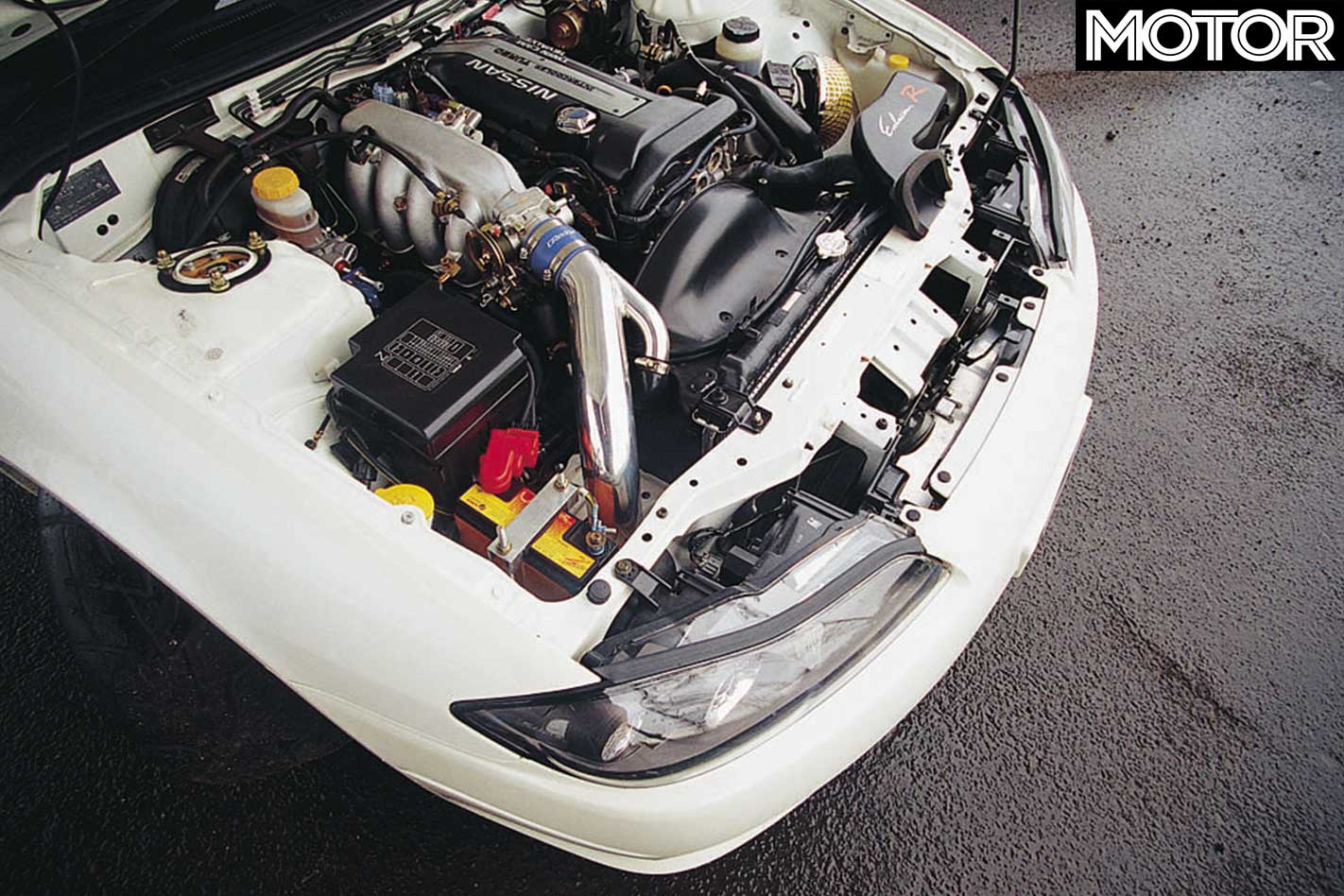
The WRX’s front-mounted intercooler and bigger snail have, however, led to a slight increase in the time taken between when you plant the clog and when the engine starts to really boost up. It’s not bad by turbo standards, but it’s not as instantly up-for-it as the Nissan’s livelier mill.
The other area where the WRX was a walk-up winner was in ride quality. The all-wheel drive compensates for the extra body roll which, in the two-wheel drives, would probably reduce the achievable grip.
No such prob in the APS car, which simply hunkers down and hurtles through a bend. It’ll still understeer into slow, tight turns, but you’re splitting hairs at that point and the vastly more comfortable end result is more than worth the slight trade-off. In fact, it feels almost stock which, apart from lowered springs and the wheel and tyre package, it is.

And if that sounds like the other two are crash and bash merchants, you’d be dead right. The Integra treads more of a middle ground with a ride that is but not always uncomfortably so. The grippy front-end remains and the steering is accurate and sharper than standard thanks to the buffed race-compound tyres that amount to treaded slicks. The lower ride height is the cause of the extra firmness, and it’s also low enough to graunch its guts through sudden dips in the road.
Likewise aimed at racetrack handling rather than High Street profiling, the 200SX is set up firmer than a car-dealer’s handshake. It skitters and crabs over mid-corner bumps and pummels you all over the cabin on what we Australians quaintly call ‘secondary roads’.
The Nissan is also one of those cars that needs to be driven hard before it starts making any sense. At urban speeds it is, without being unkind, a pig. It jiggles and wriggles and the steering is dead thanks to the camber kit that curls the front tyres up on to their inside edges so they follow every groove and side-breeze.

But get tough with it and the negative camber suddenly starts keeping the treads flat on the road, the steering comes alive and the 200SX is immediately stable, throttle-steerable and ever so fast. It would easily be the most entertaining on a track and since a race only has the one standing start, it’s more eager nature means it feels more completely tooled up than the Rex. A scratch race between all three would be something else.
One thing’s for sure, though, come the end of the main straight, the Nissan is going to pull up consistently time after time. Check out the front calipers. See the Porsche logo? Okay, now you work it out (they’re ridgy didge 911 spec, by the way). The Integra, meanwhile, has a more subtle approach, with bigger rotors mated to the original calipers Bigger brakes are also a feature of the APS car and it oo, hauls down straight and hard, time after time.
Inside? The Rex is the most subtle, with just a boost gauge in a crap plastic housing halfway up the A-pillar The 200SX is the next most lamiliar, with a small trip computer on the right of the dash (which you can’t see most of the time), a turbo-timer down on the fascia and a race seat that makes finding the conventional seat belt (there’s a harness fitted for track days) all but impossible. Most of the rest is stock.
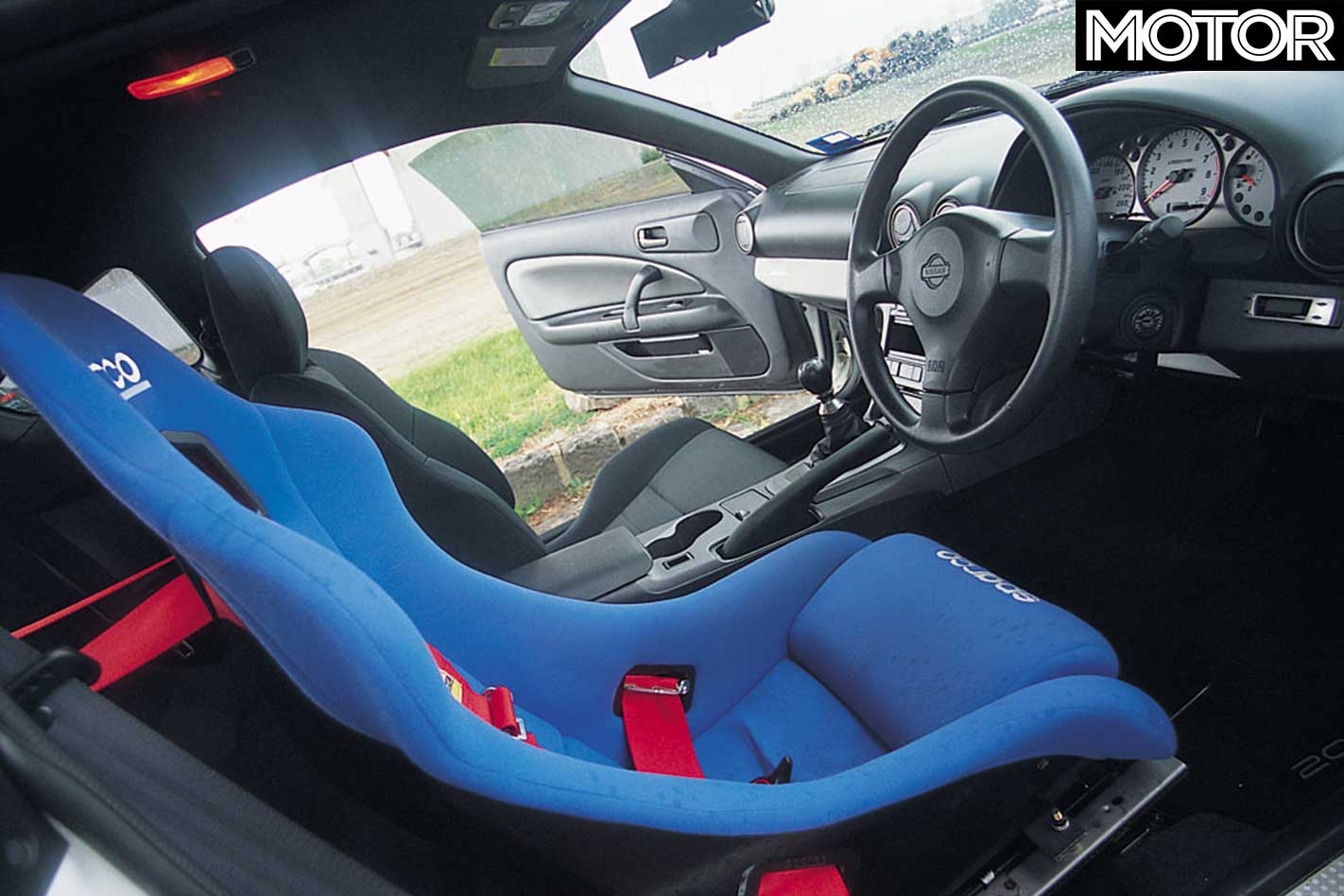
Unlike the Type R, which is the original whore’s handbag. The ciggie lighter is gone (which we discovered when we tried to hook up the Correvit), with big oil pressure and temp gauges filling the space. There’s also a velcro-mounted trip computer which gives which gives incredibly useful info like the ignition timing advance in real time (true) and even a turbo timer (pardon?). The race seat is designed for the owner, who is about 15 sizes smaller than me, and even the jump seat is a race jobbie. Miraculously, the steering wheel has a Honda part number.
Me? I wouldn’t have any of it. A turbo timer is good in a blown car, but the rest of it is just shit and glitter. Ditto the decals appearing on a bonnet near you.
Of course, what you need to remember is that while the Rex is a demonstrator for APS, the other two are privately owned. So they can have whatever they damn well want cluttering up the interior, and blokes like me can just shut the flock up.

And the truth is, I haven’t had this much fun in three very different cars for a long, long time. I wouldn’t mind betting that’s another way of saying that having a spend on your car and making it better, faster, stronger is a good way of ensuring you don’t get sick of it a few weeks after shelling out for it.
And at less than a lazy $10,000 engine-wise for what you see here it’s not a million bucks, either. In fact, the Evolution R power-up is worth $5500, the APS engine stuff is $8800 (and fully ADR-approved, remember), while the owner of the Integra has spent a grand total of $9000, but that includes the interior, wheels and tyres and dress-up stuff as well as the engine mods.
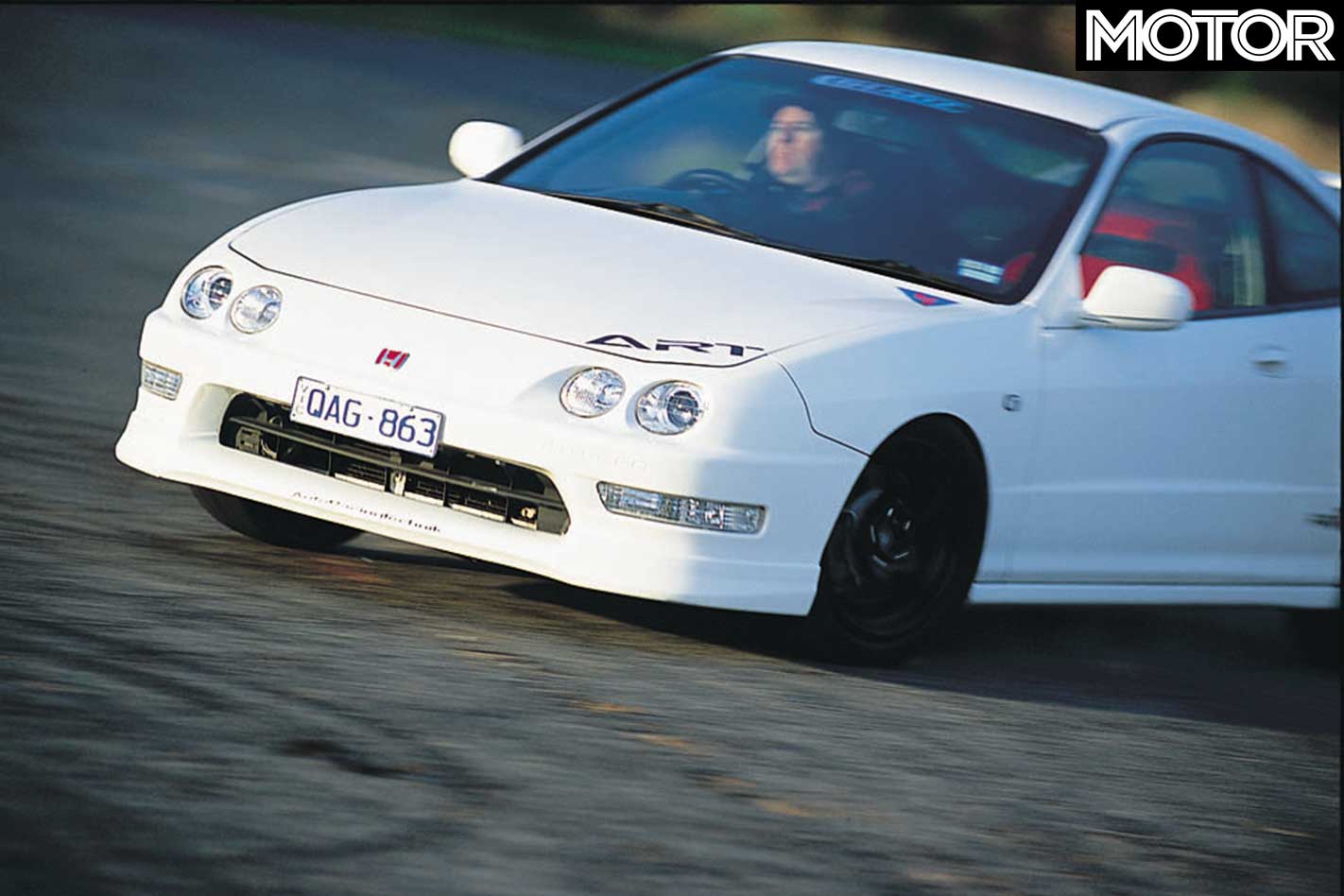
Which brings us back to where we came in: trying to hold formation and keep the racket down while commuters whizz around us, all the while keeping one eye on the mirrors for rozzers.
Except now the Rex is about 10mm off my rear bumper and the photographer has opened the door at 60km/h so he can hang out just a bit further for the shot. Oh Christ.
Fast Facts
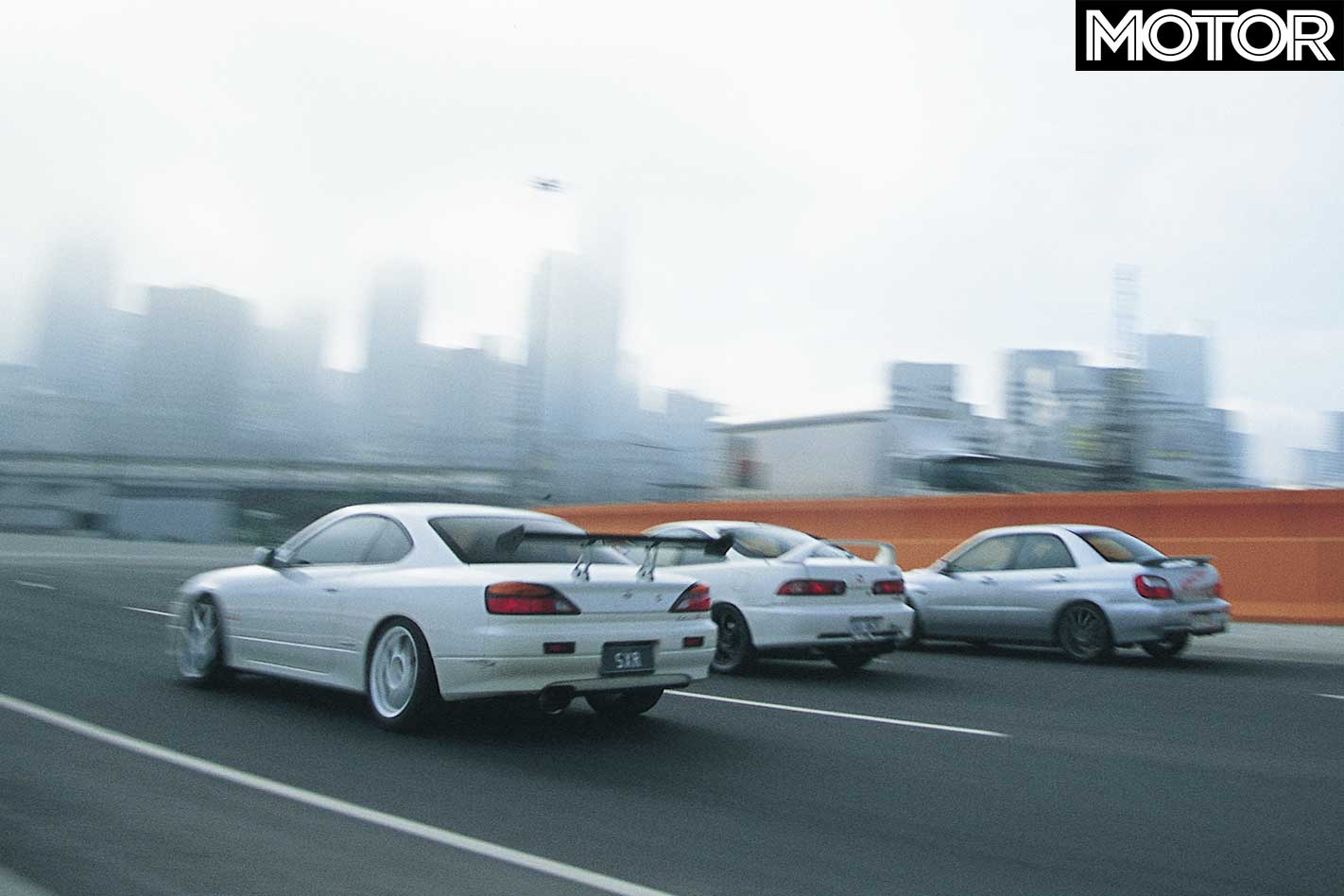
| u00a0 | Evolution R Nissan 200SX | Technik Tuning Honda Integra Type R | APS Subaru Impreza WRX RT-Spec |
| Body | 2-door coupe | 2-door liftback | 4-door sedan |
| Drive | rear-wheel | front-wheel | all-wheel |
| Engine | 2.0-litre inline-4, DOHC, 16v, turbocharged | 1.8-litre inline-4, DOHC, 16v | 2.0-litre flat-4, DOHC, 16v, turbocharged |
| Bore x Stroke | 86.0 x 86.0mm | 81.0 x 87.2mm | 92.0 x 75.0mm |
| Compression | 8.5:1 | 11.1:1 | 8.0:1 |
| Power | 260kW @ 6500rpm | 170kW @ 8500rpm | 240kW @ 6000rpm |
| Power/Weight | 203kW/tonne | 156kW/tonne | 173kW/tonne |
| Transmission | 5-speed manual | ||
| Weight | 1282kg | 1087kg | 1390kg |
| 0-100km/h | 5.11sec | 5.68sec | 4.35sec |
| 0-400m | 13.47sec @ 173.0km/h | 13.99sec @ 165.3km/h | 12.82sec @ 174.7km/h |
| Suspension (f) | McPherson struts, coil springs, anti-roll bar | double wishbones, coil springs, anti-roll bar, suspension strut tower brace bar | McPherson struts, coil springs, anti-roll bar, suspension strut tower brace bar |
| Suspension (r) | multi-links, coil springs, anti-roll bar | double wishbones, coil springs, anti-roll bar, suspension strut tower brace bar | dual-link struts, coil springs, anti-roll bar |
| L/W/h | 4445/1695/1285mm | 4395/1695/1320mm | 4405/1730/1440mm |
| Wheelbase | 2525mm | 2570mm | 2525mm |
| Tracks | 1470mm (f); 1460mm (r) | 1480mm (f); 1475mm (r) | 1485mm (f); 1475mm (r) |
| Brakes (f) | 324mm ventilated and cross-drilled discs, Brembo calipers | 300mm ventilated and cross-drilled discs, single-piston calipers | 292mm ventilated discs, 4-piston calipers |
| Brakes (r) | 258mm solid discs, single-piston calipers | 260mm solid discs, single-piston calipers | 288mm ventilated discs, twin-piston calipers |
| Wheels | 17.0 x 8.0-inch (f); 17.0 x 9.0-inch (r) | 16.0 x 6.0-inch (f/r) | 17.0 x 7.0-inch (f/r) |
| Tyres | Bridgestone RE540S; 215/45 R17 (f), 235/45 R17 (r) | Bridgestone RE540S; 195/50 R16 (f/r) | Bridgestone Potenza RE011; 215/45 R17 (f/r) |





